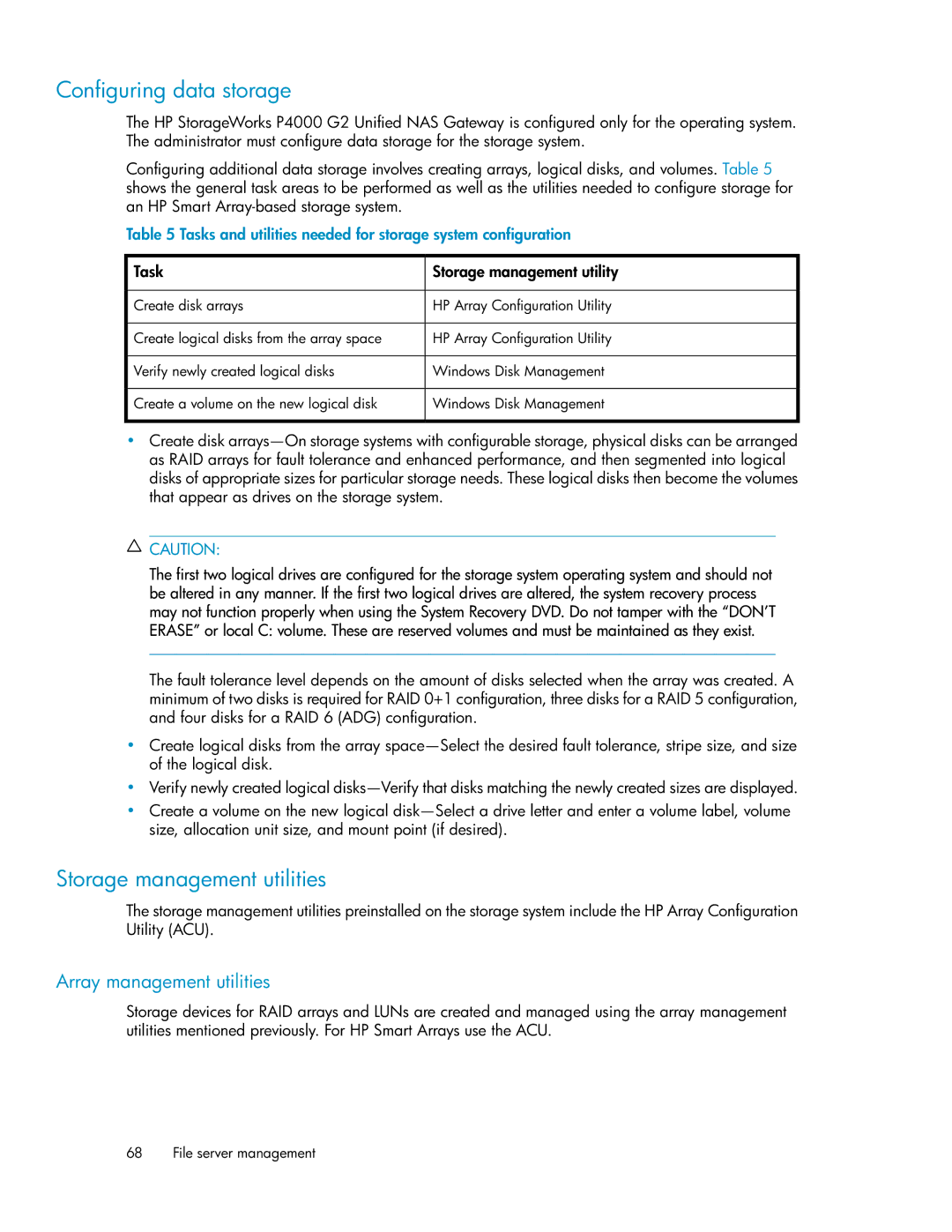
Configuring data storage
The HP StorageWorks P4000 G2 Unified NAS Gateway is configured only for the operating system. The administrator must configure data storage for the storage system.
Configuring additional data storage involves creating arrays, logical disks, and volumes. Table 5 shows the general task areas to be performed as well as the utilities needed to configure storage for an HP Smart
Table 5 Tasks and utilities needed for storage system configuration
Task | Storage management utility |
Create disk arrays | HP Array Configuration Utility |
Create logical disks from the array space | HP Array Configuration Utility |
Verify newly created logical disks | Windows Disk Management |
Create a volume on the new logical disk | Windows Disk Management |
•Create disk
![]() CAUTION:
CAUTION:
The first two logical drives are configured for the storage system operating system and should not be altered in any manner. If the first two logical drives are altered, the system recovery process may not function properly when using the System Recovery DVD. Do not tamper with the “DON’T ERASE” or local C: volume. These are reserved volumes and must be maintained as they exist.
The fault tolerance level depends on the amount of disks selected when the array was created. A minimum of two disks is required for RAID 0+1 configuration, three disks for a RAID 5 configuration, and four disks for a RAID 6 (ADG) configuration.
•Create logical disks from the array
•Verify newly created logical
•Create a volume on the new logical
Storage management utilities
The storage management utilities preinstalled on the storage system include the HP Array Configuration Utility (ACU).
Array management utilities
Storage devices for RAID arrays and LUNs are created and managed using the array management utilities mentioned previously. For HP Smart Arrays use the ACU.
68 File server management
